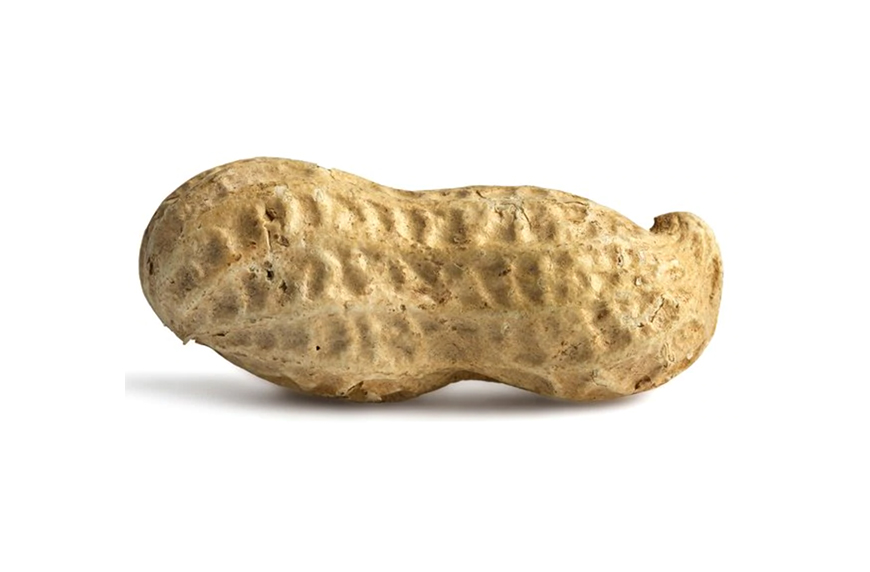How To Grow Edible and Eye-Catching Little Peanuts, According to ‘Plant Kween’ Christopher Griffin
"My goal one day is to be able to have a little outdoor garden where I'm able to grow my own food. I think there's just something really beautiful, and I don't know, empowering about being able to grow your own food," says Griffin, who is partnering with the National Peanut Board. "I live in Brooklyn. The only outdoor space that I currently have is my fire escape. So, she's limited in terms of space. And so the plant that I've had success with, in terms of growing from a seedling is the peanut plant."
- Christopher Griffin, Christopher Griffin, AKA Plant Kween, is a plant expert and influencer.
"This little queen right here, she's about two months old. And she is by far one of the easiest edible plants to grow," says Griffin showing off a peanut plant. "Fun fact: She's not a vegetable or a nut, she's actually in the same family as the peas and lentils. And eventually, she's going to grow these cute little yellow flowers." Once the petals fall the nut begins to grow under the soil.
Griffin has tried their hand at growing many plants to eat, and the peanut is by far the most successful edible plant to grow indoors.
"I've tried rosemary, and Miss Rosemary did not like me. She did not survive that long," says Griffin. "I've done the avocado. I've tried bok choy. And that was fun to do, but she didn't get to a stage where I was able to actually chop her up and put her in a little salad or something like that."
{{post.sponsorText}}
Although this plant won't yield pounds of peanuts, Griffin is enjoying the process.
"It's important to allow yourself to learn for learning's sake," says Griffin. "It's in a small little pot, I'll probably get a couple of peanuts out of it. But [I'm] using it as a stepping stone onto other adventures, and allowing [myself] to make all the mistakes right now and learn from those mistakes so that when I am able to have my lush plots of land, they'll be able to grow."
How to grow a peanut plant
1. Source a raw peanut
"You'll start with the basic peanut, right? You can't open up a pack of salted peanuts and be like 'We're going to go grow some peanuts!' Can't do that," says Griffin. "You've got to order raw peanuts from your local nursery or order them online." You can get a 1 pound bag of raw peanuts for $3 from Nuts.com.
2. Plant the peanut
Crack open the shell and take the peanut out keeping the skin on "because that's actually what just helps the plant grow and germinate," says Griffin. Get a pot that's at least 18 to 20 inches across and 18 inches deep and fill it with well-draining soil. "I have little pieces of fir bark ($11) in the soil, I have little pieces of perlite ($7), white little rocks. And that allows for the soil to be well-drained and not being wet for long periods of time. You don't want the plant to experience root rot." Plant the nut two inches deep and water it.
3. Place your peanut plant in a sunny window
"Put her in eight hours of direct sunlight," says Griffin. "I have south-facing windows, so I can just have her in my windowsill, she gets all the light that she needs."
4. Water the plant about once a week
"You water the plant about once a week," says Griffin. "Because the environmental factors of your space may be different compared to the amount of sunlight you get, the temperature, humidity, I encourage folks to stick their finger in about a couple of inches into the soil to test the moisture. So once a week should probably do fine, just test the moisture of the soil before you water the plant."
5. Prep the soil for "peg" production
About 30 to 40 days after planting, your peanut plant will grow yellow flowers. This is a signal that peanut "pegs" are ready to form around the base of the plant to produce peanuts. Think of pegs like a butterfly chrysalis—the peanut will form inside the peg. Once you notice the flowers, mound soil around the base of the plant to prepare for the pegs.
6. Up your watering
Once the pegs develop, you want to keep the soil consistently moist.
7. Get ready to harvest
After about 130 days you want to stop watering your plant ahead of the harvest.
8. Harvest and cure your peanuts
"When the foliage begins to turn yellow, carefully check the soil and hand-pull the plant," says the National Peanut Board. "Shake off excess soil and allow the entire plant to dry with the peanuts on it for about a week. Cut the peanut pods from the plant and spread in a single layer in a cool, dry place to cure for two to three weeks."
9. Enjoy!
If your peanuts aren't properly dried they aren't safe to eat. So err on the side of caution and cook them before you eat them.
"When she grows, I'm not going to be digging in the soil and having a couple peanuts," says Griffin. "You've got to make sure they're roasted or cooked and make sure that you go that route before trying to eat it."
Oh hi! You look like someone who loves free workouts, discounts for cult-fave wellness brands, and exclusive Well+Good content. Sign up for Well+, our online community of wellness insiders, and unlock your rewards instantly.
Loading More Posts...
